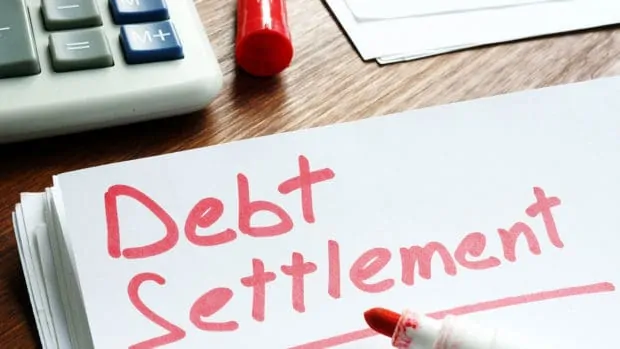Considering bankruptcy is a significant decision that comes with its own set of questions and uncertainties. One of the most pressing questions is likely about time: How long will it take to file for bankruptcy and get that fresh start you’re yearning for? Understanding the timeline is crucial, not just for legal reasons but also for your peace of mind. We’re here to demystify the process, breaking down the expected timelines for different types of bankruptcy, so you can make informed decisions and plan your journey toward financial freedom.
Chapter 7: The “Quick” Route, But With Caveats
Chapter 7 bankruptcy is often touted as the faster route to wiping the slate clean. However, it’s crucial to understand that “fast” is a relative term here. On average, you’re looking at a timeline that spans from four months to a year. That’s right, even the “quick” option requires a good chunk of time.
Factors That Affect the Timeline
- Asset Liquidation: The more assets you have, the longer it might take to liquidate them. This process involves selling off your non-exempt property to pay back creditors.
- Means Test: Before you can file for Chapter 7, you’ll need to pass a means test that assesses your income and expenses. If complications arise during this test, it could extend your timeline.
- Court Proceedings: Sometimes, legal hiccups can slow things down. Whether it’s a backlog in the court system or objections from creditors, these factors can add weeks or even months to your case.
The Emotional Aspect
While we’re talking timelines, it’s worth mentioning the emotional toll. Bankruptcy is not just a financial process; it’s an emotional one too. The uncertainty of how long it will take can add stress, so it’s essential to have coping strategies in place.
By understanding these variables, you’ll be better prepared for the journey ahead. Chapter 7 may be the quicker option, but it’s not without its complexities. Knowledge is power, and we’re here to empower you every step of the way.
Chapter 13: The Long Haul, But Worth It
If you’re leaning towards Chapter 13, prepare for a more extended journey. This type of bankruptcy usually spans three to five years. The reason? The court arranges a monthly repayment plan, allowing you to pay back a portion of your debt over time. It’s a structured approach that can be more manageable for some people, especially if you have a steady income and want to protect valuable assets like your home.
The Silver Lining: The good news is that you’ll have a set end date. Once the court establishes your payment schedule, you can mark that final payment date on your calendar. It’s a day to look forward to, a day when you’ll finally be free from the shackles of debt.
Flexibility in Payments: One of the perks of Chapter 13 is that the repayment plan can be adjusted if your financial situation changes. Lost your job? Had a medical emergency? The court can modify the terms to accommodate these life events.
Credit Score Impact: While Chapter 13 does stay on your credit report for seven years, it’s often viewed more favorably than Chapter 7 by future lenders. That’s because you’ve made an effort to repay your debts, which can be a positive signal for creditworthiness.
So, while Chapter 13 is a long haul, it offers a structured and flexible path to financial freedom, allowing you to make amends without completely wiping the slate clean. It’s a commitment, but one that could very well be worth it for your unique financial situation.
The Aftermath: Credit Score Impact
Once you’ve crossed the bankruptcy finish line, it’s crucial to understand the long-term effects on your credit report. Chapter 7 will linger for ten years, while Chapter 13 stays for seven. But here’s the good news: rebuilding your credit isn’t a waiting game; you can start right away.
The Silver Lining: Rebuilding Credit
Even though bankruptcy can feel like a financial black mark, it’s not the end of the world. In fact, some people find that their credit score actually improves shortly after filing for bankruptcy. This is because your debt-to-income ratio will likely be better, and you’ll no longer have delinquent accounts haunting you.
Steps to Take
- Review Your Credit Report: The first step in rebuilding your credit is to know where you stand. Obtain a free copy of your credit report and scrutinize it for any errors or discrepancies.
- Secured Credit Cards: Consider applying for a secured credit card. These cards require a deposit, which becomes your credit limit, and they’re a great way to demonstrate responsible credit use.
- Installment Loans: Small installment loans can also help. Just make sure to make all payments on time, as timely payments are a significant factor in your credit score.
- Budget and Save: It might sound basic, but maintaining a budget and saving money can show future creditors that you’re financially responsible, making them more likely to extend credit to you in the future.
- Consult a Credit Counseling Service: Sometimes, it’s helpful to have an expert guide you through the credit rebuilding process. Just make sure to choose a reputable service.
Keep Monitoring
Regularly check your credit score and report to track your progress. This will also help you catch any errors that could set you back.
By taking these steps, you’re not just waiting out the clock; you’re actively moving toward a better financial future. So, while bankruptcy will be a part of your financial history for a while, it doesn’t have to define it.
Your Roadmap to Financial Freedom
Bankruptcy is a complex process, no doubt about it. But understanding the timeline can make it a bit less daunting. Whether you’re considering Chapter 7 or Chapter 13, we hope this guide has helped you get a clearer picture of what lies ahead.
It’s also worth noting that while bankruptcy can offer a fresh start, it’s not a one-size-fits-all solution. There are other debt relief options that might be a better fit for your situation. And remember, the end of the bankruptcy process isn’t the end of your financial journey; it’s more like a new beginning. You’ll have the opportunity to rebuild your credit and make smarter financial choices moving forward.
So, as you weigh your options and plan your next steps, know that we’re here to guide you every step of the way. Here’s to your journey toward financial freedom, and the peace of mind that comes with it.






